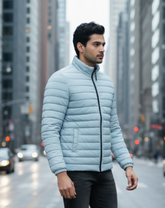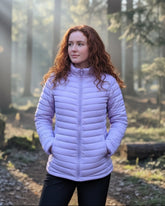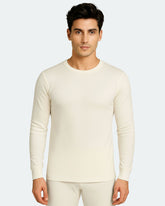Winter Clothes Maintenance Tips for Your Vacation in Europe
When embarking on a European vacation during the winter months, the proper maintenance of winter clothes is of utmost importance to ensure a comfortable and enjoyable experience. European winters can be unpredictable, with varying temperatures, precipitation, and even sudden shifts in weather patterns. Proper maintenance of your winter clothing allows you to adapt to changing conditions without compromising your comfort.
By taking care of your winter clothing, you extend their lifespan. Proper maintenance, including gentle washing, appropriate drying methods, and storing them correctly during the off-season, prevents excessive wear and tear. This, in turn, saves you money by reducing the need for frequent replacements.
Winter travel brings the risk of unexpected weather events. Keeping your winter layers in good condition ensures that you're prepared for sudden drops in temperature or unexpected snowfall, minimizing the chances of discomfort or health concerns.
Temperature in Europe
The temperatures in Europe during winter can vary widely depending on the specific region and country you're visiting. Here's a general overview of what you might expect:
Northern Europe (Scandinavia, Northern Russia):
In these regions, winter temperatures can be extremely cold, often dropping well below freezing. Average temperatures can range from -10°C to -20°C (14°F to -4°F), and it's not uncommon for temperatures to go even lower.
Central Europe (Germany, France, Switzerland):
Winter temperatures in central Europe tend to be milder than in the north but can still get quite cold. Average temperatures usually range from 0°C to -5°C (32°F to 23°F), and snowfall is common.
Eastern Europe (Poland, Czech Republic, Hungary):
Eastern European countries experience relatively cold winters, with average temperatures ranging from -5°C to -10°C (23°F to 14°F). Snow is common, and temperatures can occasionally drop lower.
Western Europe (UK, Ireland, Belgium, Netherlands):
Winters in Western Europe are generally milder compared to the eastern and northern parts of the continent. Average temperatures hover around 5°C to 10°C (41°F to 50°F), and snowfall is less frequent.
Southern Europe (Spain, Italy, Greece, Portugal):
Southern Europe enjoys relatively mild winters, with average temperatures ranging from 10°C to 15°C (50°F to 59°F). While snowfall is rare in most parts, higher elevations might experience some snow.
It's important to note that these are just general averages, and temperatures can vary from year to year. Additionally, coastal areas might experience milder temperatures due to the moderating influence of the ocean. Packing accordingly with layers, warm clothing, and appropriate winter gear is essential to staying comfortable during your European winter vacation.
Proper winter clothes maintenance, as discussed earlier, will help ensure you stay comfortable and stylish throughout your European winter vacation.
Understanding Your Travel Apparel
Different types of travel wear and winter layers that are suitable for European trips
When preparing for a European trip during the winter, it's essential to pack a variety of travel wear and winter layers to stay warm, comfortable, and stylish. Here are different types of clothing items to consider:
Winter Coats and Jackets Heavy Winter Coat:
A high-quality insulated coat is a must, especially in colder regions. Look for options with down or synthetic insulation for optimal warmth. Waterproof Jacket: In regions prone to rain or snow, a waterproof or water-resistant jacket will keep you dry and protected.
Sweater for winter Sweaters and Hoodies Wool Sweaters:
Wool is an excellent insulator and can provide both warmth and style. Fleece or Thermal Hoodies: These provide an extra layer of warmth and can be easily layered under a coat.
Thermal Layers Thermal Tops and Bottoms:
Thermal Wear for Men clothing traps body heat and is ideal for wearing under your regular clothes for added warmth.

Merino Thermals Pants and Bottoms Insulated Pants:
In extremely cold areas, insulated pants provide warmth and protection from wind and snow.
Jeans or Thick Trousers:
These can be layered over thermal leggings for added warmth.
What to Wear in Europe for Men
Accessories
Gloves: Insulated and Waterproof Gloves for Men are essential to protect your hands from cold and wet conditions.

Scarves: A scarf not only keeps your neck warm but can also be wrapped around your face for added protection against the cold wind.
Hats or Beanies: Merino Wool Reversible Beanie for Women A warm hat helps to retain body heat, preventing heat loss from your head.

Thermal Socks: Thick, Woolen Socks for Men keep your feet warm and comfortable while exploring.

Footwear
Insulated Boots: Sturdy, insulated boots with good traction are crucial for walking on slippery surfaces.
Waterproof Shoes: Waterproof shoes or boots are essential in wet or snowy conditions.
Remember that layering is key to adapting to varying temperatures and conditions. You can mix and match these clothing items to create different combinations based on the weather you encounter during your European trip. Additionally, prioritize winter clothes maintenance, as discussed earlier, to ensure that your clothing remains effective throughout your vacation.
What to Wear in Europe for Women
Importance of choosing sustainable and technical apparel from Kosha
Choosing sustainable and technical apparel from a brand like Kosha holds significant importance for various reasons, especially when preparing for a European winter vacation.
Environmental Responsibility: Sustainable apparel is designed with reduced environmental impact in mind. By choosing Kosha's sustainable options, you actively contribute to minimizing the fashion industry's carbon footprint, which often results from resource-intensive manufacturing processes and excessive waste.
Durable Quality: Technical apparel is engineered to withstand challenging conditions. Kosha's technical garments are designed for performance, ensuring that they are durable and capable of enduring the demands of travel, outdoor activities, and changing weather.
Functionality: Technical clothing is built with advanced features to enhance functionality. This can include moisture-wicking properties, wind resistance, breathability, and insulation. When exploring European cities and landscapes, having clothing that performs well under varying conditions can greatly enhance your comfort and enjoyment.
Adaptability: Technical clothing often offers versatility in layering, allowing you to adapt to different temperatures by adding or removing items. This adaptability is crucial during a European winter vacation where weather conditions can be unpredictable.
Comfort: Sustainable and technical fabrics are often chosen for their comfort. They are designed to regulate body temperature, manage moisture, and provide a comfortable fit, which is especially important when spending prolonged periods outdoors in cold temperatures.
Innovation: Technical apparel often incorporates innovative design elements and materials. By choosing Kosha's technical options, you benefit from advancements in clothing technology, leading to a more enjoyable travel experience.
Educational Aspect: Opting for sustainable and technical apparel contributes to raising awareness about eco-friendly practices and encourages others to make environmentally conscious choices. It sets a positive example for fellow travelers and consumers.
In the context of a European winter vacation, the combination of sustainability and technical performance offered by brands like Kosha becomes particularly relevant. It aligns with the need for adaptability, warmth, and comfort, while also promoting responsible consumption. Prioritizing sustainable and technical clothing not only enhances your personal travel experience but also supports a more sustainable and ethical fashion industry.
Packing Strategies
Tips for organizing and packing your travel clothes efficiently
Efficiently organizing and packing your travel clothes is essential for a smooth and stress-free journey, especially during a European winter vacation. Here are some valuable packing strategies for the maintenance of winter clothes.
Make a Packing List: Create a detailed packing list that includes all the clothing items you'll need. This will help you avoid overpacking and ensure you don't forget any essential items.
Plan Outfits: Plan your outfits to avoid packing unnecessary clothing. Aim for versatility by selecting items that can be mixed and matched to create different looks.
Use Packing Cubes or Compression Bags: Packing cubes and compression bags are excellent tools for saving space and staying organized. Separate your clothing into categories (e.g., tops, bottoms, undergarments) and use different cubes or bags for each category. Compression bags can further reduce the volume of your clothing.
Roll Your Clothes: Rolling your clothes instead of folding them can save space and minimize wrinkles. This technique is particularly effective for T-shirts, jeans, and other casual items.
Layer Heavy Items: Place heavier clothing items, like jeans or sweaters, at the bottom of your suitcase or bag. This creates a solid base and prevents them from crushing more delicate items.
Pack Smaller Items Inside Shoes: Utilize the interior space of your shoes by packing small items like socks, underwear, or rolled-up belts inside them. This efficient use of space can help prevent your shoes from getting misshapen as well.
Minimize Accessories: Pack a few versatile accessories that can elevate your outfits without taking up too much space.
Use Vacuum Compression Bags: If you're dealing with extremely limited space, vacuum compression bags can further reduce the volume of your clothing, particularly for bulkier winter wear.
Avoid Overpacking: Remember that you'll likely want to bring back souvenirs, so leave some space in your luggage for those items.
Washing Instructions
A detailed guide to washing different types of travel apparel and winter layers
Washing your travel apparel and winter layers properly is crucial for maintaining their quality, performance, and longevity. Different fabrics and materials require specific care to ensure they stay clean and functional.
Moisture-Wicking Clothes (e.g., base layers, activewear): Wash these items in cold water with a gentle detergent. Avoid fabric softeners as they can clog the moisture-wicking properties. Machine dry on a low heat setting or hang them to air dry.
Waterproof and Water-Resistant Clothing: Use a specialized detergent for waterproof garments. Fasten all zippers and closures before washing. Follow the manufacturer's instructions, usually involving a gentle cycle with cold water. Avoid fabric softeners and high heat drying, as they can damage the waterproof coating.
Insulated Garments (e.g., down jackets, insulated pants): Check the care label for specific instructions. Use a front-loading washing machine with cold water and a gentle detergent designed for down or technical fabrics. Use an extra rinse cycle to ensure all detergent is removed. Tumble dry with dryer balls or clean tennis balls on low heat to restore loft.
Using appropriate detergents for technical fabrics and sustainability
Technical Fabric Detergents: Use detergents specifically designed for technical fabrics. These detergents are formulated to remove sweat, oils, and dirt without compromising the fabric's performance properties.
Eco-Friendly Detergents: Opt for eco-friendly detergents that are free from harsh chemicals and phosphates. Look for detergents labeled as biodegradable and suitable for cold water washing.
Wool-Specific Detergents: When washing wool, use a wool-specific detergent that is gentle and pH-neutral to prevent damage to the natural fibers.
Delicate Items: For delicate items or when in doubt, hand washing is often the safest option. Use cold water and a gentle detergent. Gently agitate the water to clean the clothing without rubbing or scrubbing.
Special Care for Winter Layers
Indeed, winter layers like insulated jackets, thermal clothing, and cold-weather accessories require special care to ensure they remain effective and in good condition throughout your European winter vacation. Here's a guide for the maintenance of winter clothes: Insulated jackets, thermal layers, and cold-weather accessories require maintenance
Insulated Jackets: Cleaning: Check the care label for specific cleaning instructions. In most cases, use a front-loading washing machine with a gentle cycle and cold water. Use a detergent designed for technical fabrics or down insulation. Avoid using fabric softeners, bleach, or harsh chemicals. Storage: Store your insulated jacket uncompressed in a cool, dry place. Avoid prolonged exposure to direct sunlight or extreme temperatures. If storing for an extended period, consider using a breathable garment bag.
Thermal Layers: Washing: Wash thermal layers in cold water with a gentle detergent. Avoid harsh scrubbing or wringing, as thermal fabrics can be delicate. Use a delicate cycle or hand wash for best results. Drying: Air dry thermal layers by laying them flat on a clean surface. Avoid hanging them, as the weight of wet fabric can cause stretching.
Cold-Weather Accessories (Gloves, Hats, Scarves, etc.):
Hand Washing: Hand wash cold-weather accessories in cold water with a mild detergent. Gently agitate the water without scrubbing to avoid damaging delicate fibers.
Leather and Fur: If your accessories have leather or fur components, follow specific care instructions for those materials. Leather may need conditioning, and fur should be stored in a cool, dry place to prevent drying out.
Proper maintenance of winter clothes ensures that you'll be well-prepared for the cold European weather while maximizing the longevity and performance of your clothing and accessories. Taking the time to care for these items will enhance your comfort and enjoyment throughout your winter vacation.
Sustainable Practices
Importance of eco-friendly maintenance approaches
Embracing sustainable practices for the maintenance of winter clothes is not only beneficial for the environment but also contributes to the overall quality and longevity of your clothing. Here's why eco-friendly maintenance approaches are important:
Reduced Environmental Impact: Traditional cleaning methods often involve harsh chemicals that can harm aquatic ecosystems and contribute to pollution. Eco-friendly detergents and cleaning practices minimize the release of harmful substances into the environment, helping to protect waterways and wildlife.
Preservation of Resources: Sustainable maintenance practices conserve resources like water and energy. Cold water washing and air drying, for example, consume less energy than hot water washing and machine drying.
Extended Clothing Lifespan: Eco-friendly maintenance methods are gentler on fabrics, reducing wear and tear. This extends the lifespan of your clothing, reducing the need for frequent replacements and contributing to a more sustainable consumption pattern. Promotion of
Sustainable Fashion: By adopting sustainable practices, you actively support the movement towards ethical and sustainable fashion. This encourages the fashion industry to prioritize environmentally friendly production and care methods. Eco-Friendly Maintenance Approaches
Use Eco-Friendly Detergents: Choose detergents that are biodegradable, phosphate-free, and free from harsh chemicals. Look for labels that indicate eco-friendliness. Cold Water Washing: Wash clothing in cold water whenever possible. This reduces energy consumption and prevents fading and shrinkage.
Avoid Overwashing: Not all clothing needs to be washed after every wear. Many items, especially outer layers, can be worn multiple times before washing. Proper Storage: Store your clothing in a cool, dry place with good ventilation. This prevents mold and mildew growth. By embracing sustainable maintenance practices, you're making a positive impact on the environment, preserving resources, and contributing to a more responsible and ethical approach to clothing care. Your choices can inspire others and collectively lead to a more sustainable future.
Long-Term Preservation
Extending the lifespan of your travel wear and winter layers is not only economically advantageous but also environmentally responsible. Here are some valuable tips to help you preserve your clothing and get the most out of your investment:
Tips for extending the lifespan of your travel wear and winter layers
Read Care Labels: Care labels provide specific instructions for washing, drying, and maintaining your clothing. Follow these instructions to ensure you're treating your items correctly.
Rotate Your Clothing: Avoid wearing the same pieces every day. Regularly rotating your clothing allows each item to rest between wears, reducing wear and tear.
Wash Less Frequently: Not all clothing needs to be washed after every wear. Outer layers like coats and jackets, as well as thermal layers, can often be worn multiple times before requiring washing. Use Gentle Detergents: Opt for mild detergents that are suitable for delicate fabrics. Harsh chemicals can weaken fibers and cause colors to fade.
Choose Gentle Cycles: When using a washing machine, opt for delicate or gentle cycles to reduce friction and agitation.
Hand Wash Delicates: For particularly delicate items, hand washing is often the best option. Gently agitate the water and avoid wringing. Air Dry: Whenever possible, air dry your clothing to prevent shrinking, fading, and damage from high heat. Hang items on hangers or lay them flat on a clean surface.
Avoid Direct Sunlight: Prolonged exposure to direct sunlight can cause colors to fade over time. Dry your clothes in the shade or indoors. Regular Inspections: Periodically inspect your clothing for signs of wear, loose threads, and minor damage. Address these issues promptly to prevent them from worsening. By following these tips, you'll be able to extend the life of your travel wear and winter layers, making the most of your clothing while contributing to a more sustainable and responsible approach to fashion consumption. It is also a great idea for the maintenance of winter clothes.
FAQs
Here are some frequently asked questions about the maintenance of winter clothes.
Do you need thermals in Europe in winter?
Make sure to include warm thermals on your list of "winter packing for Europe." Not only will this layer keep you warm, but by wearing just this layer, you won't need to cover it with a jacket or an overcoat to wear a lovely dress or an elegant top above it.
How to dress like a European woman in winter?
In Europe's winter, fleece makes for the ideal clothing material to keep you warm. Therefore, layering your favorite fleece leggings under your winter dresses or jeans is always a good idea. Complete your winter look for Europe with a camera bag, a pair of casual shoes, and some delicate jewelry.
What jacket to wear in Europe in winter?
A decent winter jacket ought to be warm, windproof, waterproof, and hooded. As your first line of defense against the cold, a sturdy shell is crucial. Make sure you like the winter jacket because you'll wear it almost every day. Maintaining a neutral color palette gives you additional wardrobe alternatives.
Scarves for winter Do I need a scarf in Europe?
A scarf is always a smart decision in the winter and fall for warmth. However, it's always helpful to have a sizable scarf on hand in the spring and summer in case you decide to visit any churches. This is a simple technique to simultaneously spice up your clothes and be a little more modest.
Should I take jeans to Europe?
Wear clothing that makes you feel at ease. Many Europeans wear jeans, especially thin jeans, but they are not the best vacation attire because they take so long to dry. For your trip, create a capsule wardrobe of European-inspired pieces that you can layer, mix, match, and wear together.
Conclusion
In conclusion, proper winter clothes maintenance is an essential aspect of preparing for a memorable and comfortable European vacation during the colder months. By following the guidelines outlined in this comprehensive guide, you can ensure that your travel wear and winter layers remain in optimal condition, offering you warmth, style, and functionality throughout your journey. From the importance of choosing sustainable and technical apparel to understanding the specific care requirements of different fabrics, you're equipped with the knowledge needed to make informed decisions that benefit both you and the environment.
Remember to plan your outfits thoughtfully, utilize packing cubes or compression bags to save space, and prioritize layering options for adapting to changing weather conditions. Whether you're exploring vibrant cities, and picturesque landscapes, or engaging in outdoor activities, your well-maintained winter layers will provide comfort, protection, and style. For any queries related to wearing thermals, base layers, or winter wear in general, visit Kosha’s store and get a free consultation! While you’re at it, check out Kosha’s website for the wide range of thermals and jackets available at Kosha.
This blog article is written by Kosha Team Member – Neeti Kapoor
Editor’s Picks
Packable Puffer Jacket For Men
- From ₹3,900.00
₹8,400.00- From ₹3,900.00
- Unit price
- / per
Men's Full Sleeves Thermal | Merino Wool + Bamboo
- ₹4,940.00
₹7,600.00- ₹4,940.00
- Unit price
- / per
Alaskan Parka Jacket For Women - Slim Fit
- ₹8,925.00
₹11,900.00- ₹8,925.00
- Unit price
- / per
Lightweight Packable Puffer Jacket For Women
- ₹6,300.00
₹8,400.00- ₹6,300.00
- Unit price
- / per
Men's Merino Wool Cushioned Technical Socks
- ₹1,074.00
₹1,790.00- ₹1,074.00
- Unit price
- / per













